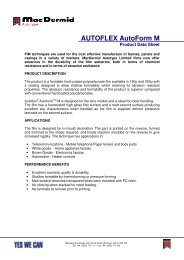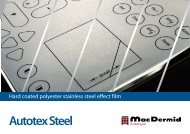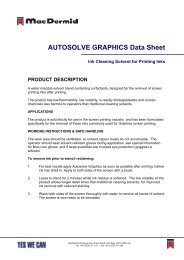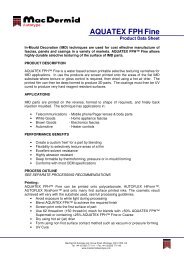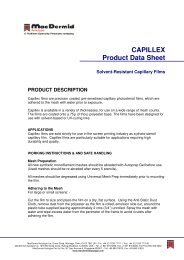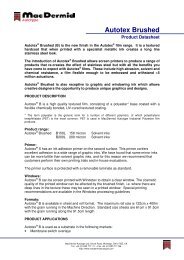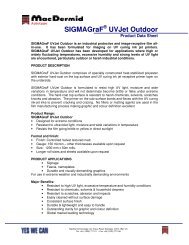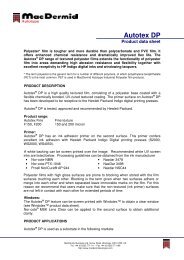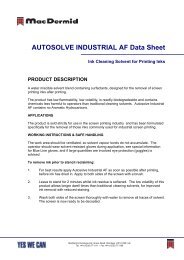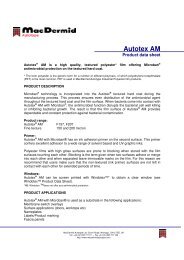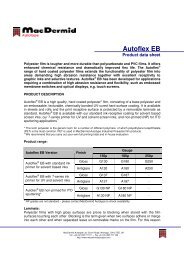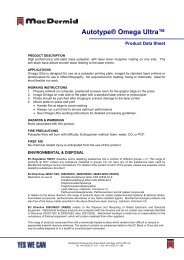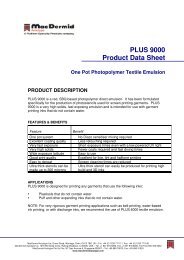Screen E-Book (.PDF) - MacDermid Autotype
Screen E-Book (.PDF) - MacDermid Autotype
Screen E-Book (.PDF) - MacDermid Autotype
- No tags were found...
Create successful ePaper yourself
Turn your PDF publications into a flip-book with our unique Google optimized e-Paper software.
Caza finds, for example, that for his veryhigh lpi printing that Caza a, which happenedto have a low CFI for us, works verywell. It would be interesting to see the CFIdata at these high linecounts.What is applicable is our methodology.First, the principles of dot-on-dot gainneed to be grasped by your organisation.Next you need to make sure you are printingwith low-EOM and low-Rz to ensureyou have the minimum dot-on-dot andsqueegee-based gain. You need to choosea thin mesh and, if possible, a “thinnable” inksuch as water-based UV. Then you need todecide which colour should be 15° fromthe yellow to minimise the moiré effect.Then you can make up a simple test stripwith 3 grey balance patches, a 3-colourtone curve and a 4-colour black (with yourown GCR/UCA settings) and quickly printa few different sequences using your fourstencils.With a spectrophotometer (or spectrodensitometer)you can measure the grey scalechanges and with an ordinary % Dot densitometeryou can measure the 3-colourtone densities and the 4-colour black densities.A simple spreadsheet will then letyou work out your own CFI. In a shop witha 4-colour press the whole process wouldbe very quick and very insightful.ConclusionAs so often with screen printing, whenyou strip away unnecessary confusionsby getting the basic preparation right itbecomes much easier to make sensibledecisions that affect you and your customers.Choosing the right stencil, the rightchoice of mesh to remove mesh moiré, theright ink density, agreeing on a standard of“truth” made our task much simpler. With arelatively few objective measurements, andwith the simple understanding of moiréwe were able to come up with a couple ofprint sequences which we would use on aroutine basis for colour printing. We hopethat you will be able to reach a similar conclusionby carrying out a few objectivetests on your own prints.AcknowledgmentsThanks to Bill Appleton, Prof John Davison,Michel Caza, Prof Long Lin for advice andpractical help.A simple test strip that would let you measure theCFI of any set of print sequences.59



